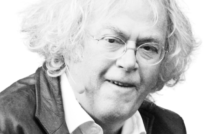
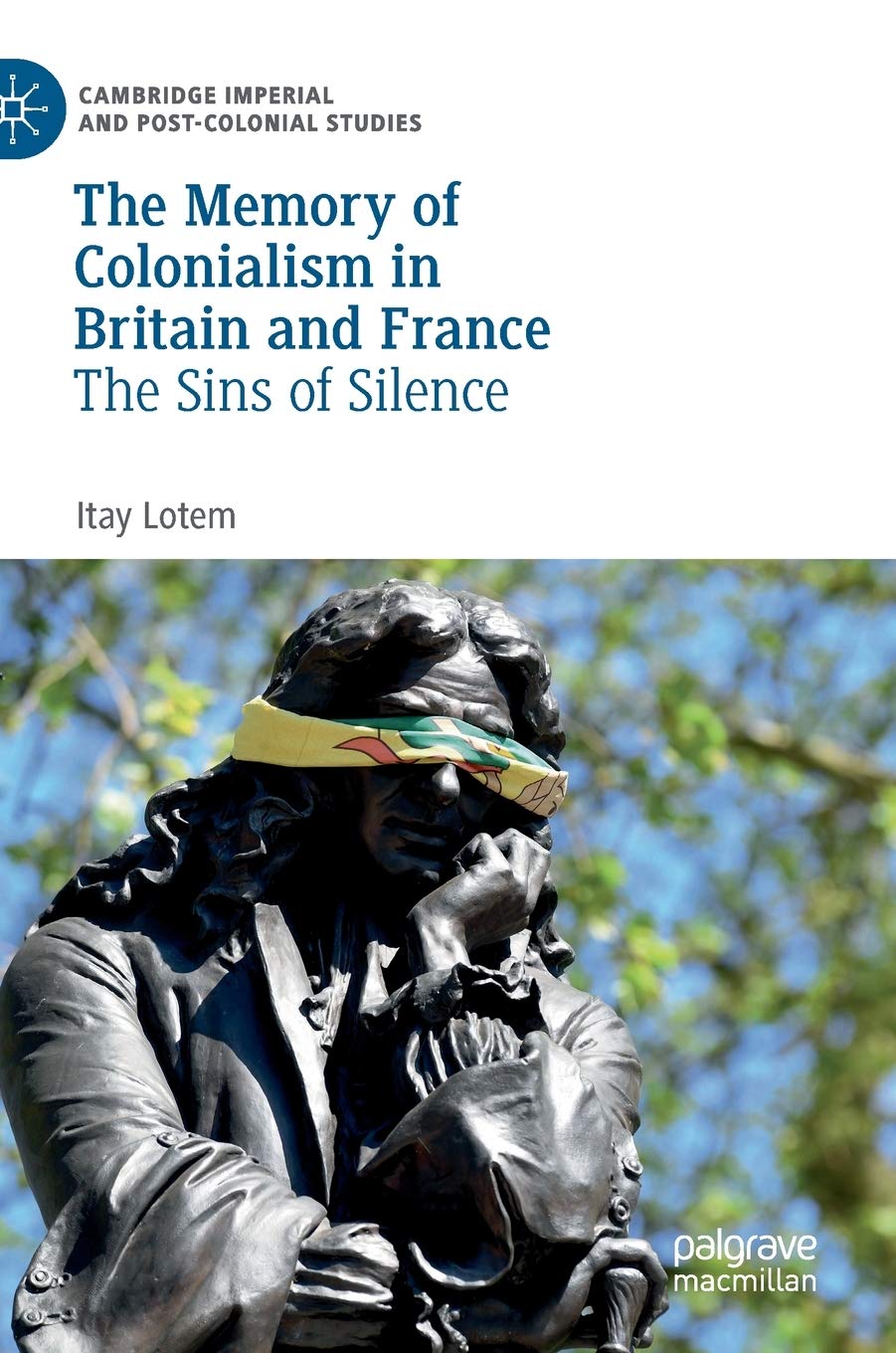 The Memory of Colonialism in Britain and France: The Sins of Silence
The Memory of Colonialism in Britain and France: The Sins of Silence
By Itay Lotem
Publisher: Palgrave Macmillan
Recommended by Jean Beaman
History is politicized, including what we remember and how we remember it. Amid a global discussion on the commemoration of slavery and colonialism and the toppling of statues of former colonial leaders across Europe, Itay Lotem’s The Memory of Colonialism in Britain and France: The Sins of Silence is a welcome addition. Specifically, Lotem contrasts how various actors in Britain and France, including activists and journalists, marshal each society’s history of colonialism to different political ends. Lotem also examines introspective memory and the silencing of colonial histories. Both major colonial empires, these societies have struggled to reckon with the legacies of these colonial empires in the post-colonial era, particularly in light of present multiculturalism and diversity. As such, we learn that memorializing colonialism—and constructing a national narrative of the past—is a social process, not an inevitable one.
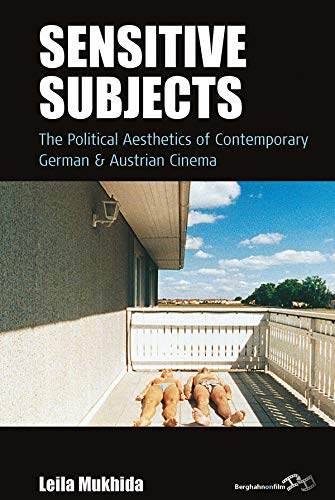 Sensitive Subjects: The Political Aesthetics of Contemporary German and Austrian Cinema
Sensitive Subjects: The Political Aesthetics of Contemporary German and Austrian Cinema
By Leila Mukhida
Publisher: Berghahn Books
Recommended by Temenuga Trifonova
In Sensitive Subjects, Leila Mukhida explores the political aesthetics of post-unification German and Austrian cinema through the lens of early twentieth century theory by neo-Marxist German-Jewish intellectuals associated with the Frankfurt School. She argues for the continued relevance of the writings of Walter Benjamin, Siegfried Kracauer, and Alexander Kluge for understanding the ways in which contemporary German language film is political. The book departs from Jacques Rancière’s conceptualization of “the political”—which has largely shaped understandings of the political in relation to German language cinema—in terms of an oppositionality, disturbance, interference, and interruption. It also separates itself from Eric Rentschler’s influential account that positions German “post-wall cinema of consensus” against the intensely political New German Cinema of the 1960s and 1970s. Pointing out the limitations of Rentschler’s account, which measures the political value of contemporary films against the aesthetic and stylistic choices and production strategies of the New German Cinema, Mukhida insists that the political aesthetic of contemporary German language films cannot be accounted for through the dichotomy between “consensus” and “interference.”
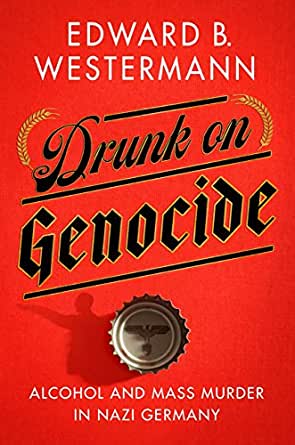 Drunk on Genocide: Alcohol and Mass Murder in Nazi Germany
Drunk on Genocide: Alcohol and Mass Murder in Nazi Germany
By Edward B. Westermann
Publisher: Cornell University Press in association with the United States Holocaust Memorial Museum
Recommended by Nick Ostrum
One cannot read much about the Shoah without noticing the ubiquity of booze among perpetrators. Until Edward Westermann’s Drunk on Genocide, however, few historians have endeavored to systematically analyze the myriad, interconnected roles alcohol use and abuse played in facilitating the Nazi prosecution of its racial war in the east. Alcohol alone tells us little about the Holocaust and related atrocities. As Westermann makes clear, however, it was one important part of a broader nexus of factors, which ranged from military and drinking cultures to practices of masculinity to Nazi racial ideologies to evolving conditions on the front. Indeed, Westermann complicates our understanding of the role of alcohol by examining intoxication simultaneously as a physical state, a social practice and process, and a linguistic filter through which wartime experiences of elation and bloodlust were mediated. Alcohol, moreover, was not just a tool of disinhibition, celebration, and coping. It also enabled. It was a marker of manliness and imbibing often led to conspicuous acts of dominance, aggression, sexual violence, and outright murder. Consuming alcohol at certain times and with regularity also promoted the ritualization of mass violence and the individual acts of genocide, whether drinking occurred before, during, or after a killing, and whether it was intended to induce psychological numbing or a celebratory state of euphoria.
Drunk on Genocide is no easy read. It details atrocity after atrocity both on a meta level – in the mass atrocities committed at the death camps and in Einsatzgruppen missions – and on a micro level – in the meticulous cataloguing of individual acts of torture, sexual violence, and murder in the killing fields and camps of Eastern Europe. In part because of this, Drunk on Genocide is an essential read, and one that offers considerable insights into the intimate relationship between ritualized intoxication, cults of masculinity, ideological antisemitism, and the mass murders in the bloodlands of the east.
A more nuanced understanding of the political, she proposes, can be gained by going further back than the 1962 Oberhausen Manifesto—back to the Frankfurt School’s left-wing critical theory. Drawing on a range of film theoretical approaches (from Marxist film theory, through cultural history, to affect theory and reception studies), Mukhida analyzes eight post-1989 works (spanning different genres and shot on 16mm, 32mm, HD, and HDTV) by German speaking filmmakers through the lens of Benjamin, Kracauer, and Kluge, asking how their observations about subjectivity and agency under the conditions of technological modernity and capitalism relate to the present age of advanced capitalism and digital technology. Although the book centers on German speaking directors, Mukhida is primarily interested in exploring supranational themes of work, class, gender, and violence in Western European neoliberal democracies. Indeed, she raises questions about the “Germanness” of German language film by including work by three directors associated with “the New Austrian Film” as well as one French language film by the German-born, Austrian-residing Michael Haneke, and by framing the discussion against the background of two major geopolitical shifts – globalization and transnationalism on one hand, and the fall of the Iron Curtain and Germany’s unification on the other hand.
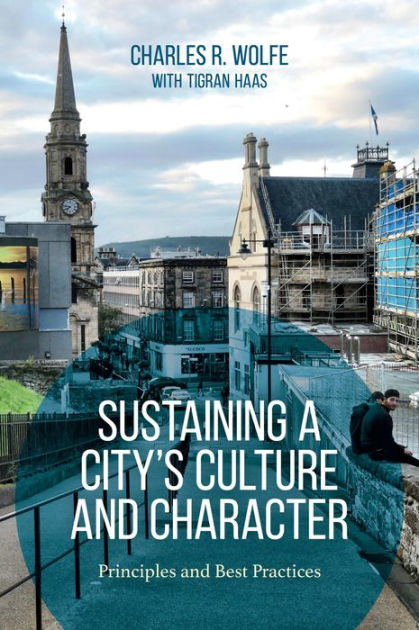 Sustaining a City’s Culture and Character: Principles and Best Practices
Sustaining a City’s Culture and Character: Principles and Best Practices
By Charles R. Wolfe with Tigran Haas
Publisher: Rowman & Littlefield
Recommended by Hélène B. Ducros
Drawing on his experience as an environmental and land use lawyer, Charles Wolfe sets to understand how cities are “successful” at fostering and sustaining place identity. In Sustaining a City’s Culture and Character, the urbanism consultant not only investigates what it takes for cities to retain their specific urban essence and why some places do it better than others, but he also proposes a methodological path to assess processes of urban place-making. He advances LEARN (Look, Engage, Assess, Review, Negotiate) as a scheme to envisage the urban as a “blend” where local experiences and the vernacular combine with global influences and standardized canons. As he considers place character as filtered through familiarity, congruity, and integrity, Wolfe uses contentious concepts, such as authenticity and uniqueness. Immersion in place is seen as a key component of the methodologies that allow to decipher, delineate, decompose, and deconstruct places into parts in order to grasp the internal and external forces that transform them over time. In his dissection of urban signature elements, Wolfe emphasizes the importance of a bottom-up and participatory approach to city planning. He conceptualizes the city as a co-construction where consultations, backstories, local knowledges and experiences, personal reflections and group narratives, sensory perceptions and sensuous reflections are validated as crucial tools to face questions of urban livability, aesthetics, affordability, empowerment, and gentrification.
Wolfe’s vision into the means by which cities sustain cultural attributes is grounded in plural methods―from ethnographies to artistic production or mapping― multi-scalar and multi-sited examination of explicit or implicit place-making strategies, and the recognition of the hybridity of place, all of which have long been familiar engagements in humanistic geography. Hence, the approach in this book should yield a useful critical dialogue with human geographers, but also with urban planners, tourism studies scholars, heritage practitioners and “place entrepreneurs,” as well as urban ecologists generally interested in urban environments, community-building, sense of place, place-making, or dwelling. Moreover, beyond the realm of cities, the author’s LEARN template can be applied to decode any place at any scale, standing as an organizing principle to apprehend the ways in which people get attached to changing places and to tackle the tensions arising with transformation, for example in situations of climate risk or intense place commodification.
Published on May 11, 2021.

